Abstract
L cells lacking thymidine kinase (TK) activity (Ltk− cells) have been stably transformed to a TK-positive phenotype by infection with ultraviolet-irradiated herpes simplex virus (HSV-UV). The highest frequency of the Ltk− to Ltk+ transformation observed in these experiments was approximately 10−3, whereas no measurable transformation was observed (less than 10−8) in the absence of HSV-UV infection. Cell lines of HSV-transformed Ltk+ cell lines contain 7 to 24 times as much TK activity as do the parental Ltk− cells, and they have been maintained in culture for a period exceeding 8 months. The kinetics of thermal inactivation of the TK activity derived from an Ltk+ HSV-transformed cell line and the TK activity from Ltk− cells lytically infected with infectious HSV are similar. Both of these TK activities are much more thermolabile than the TK activity present in wild-type L cells. A mutant strain of HSV which does not induce TK activity during lytic infection does not cause the Ltk− to Ltk+ transformation. These data suggest that either an HSV TK gene has been transferred to Ltk− cells or that an HSV gene product has caused the expression of a previously repressed cellular enzyme.
Full text
PDF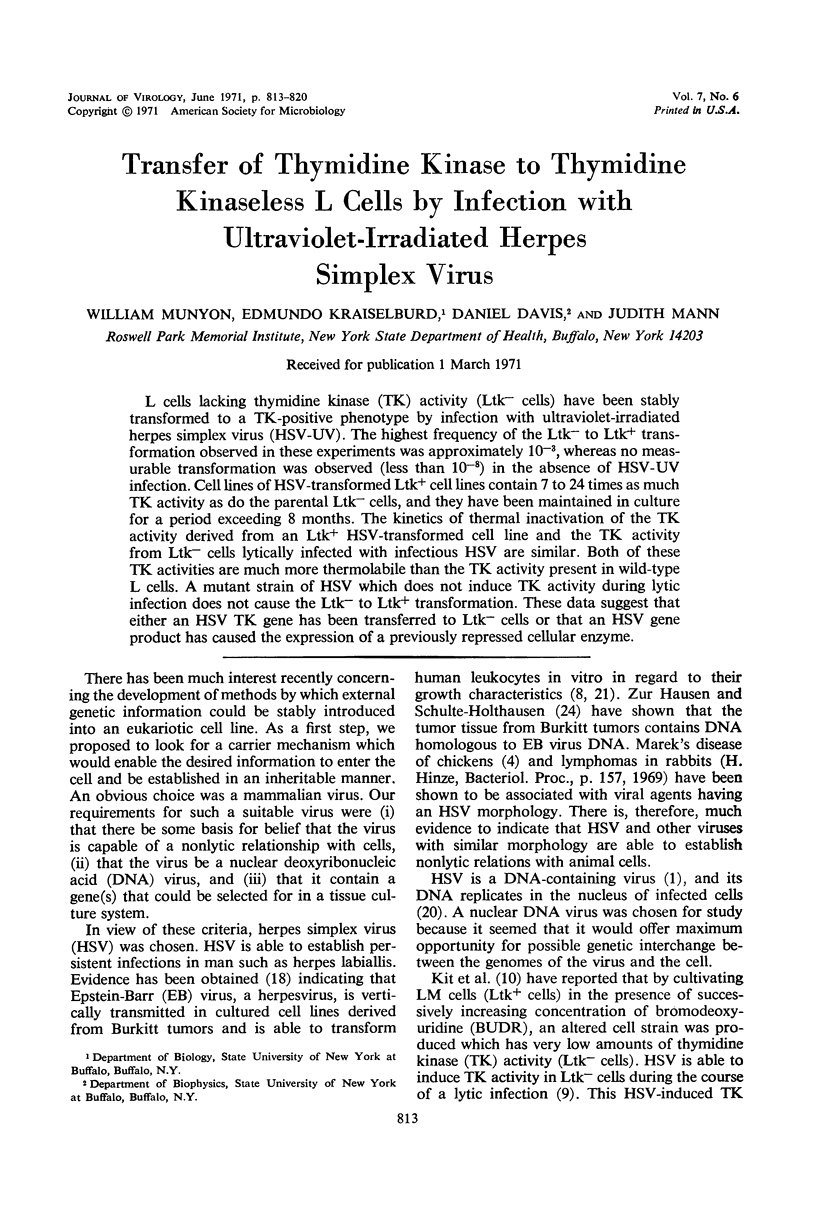
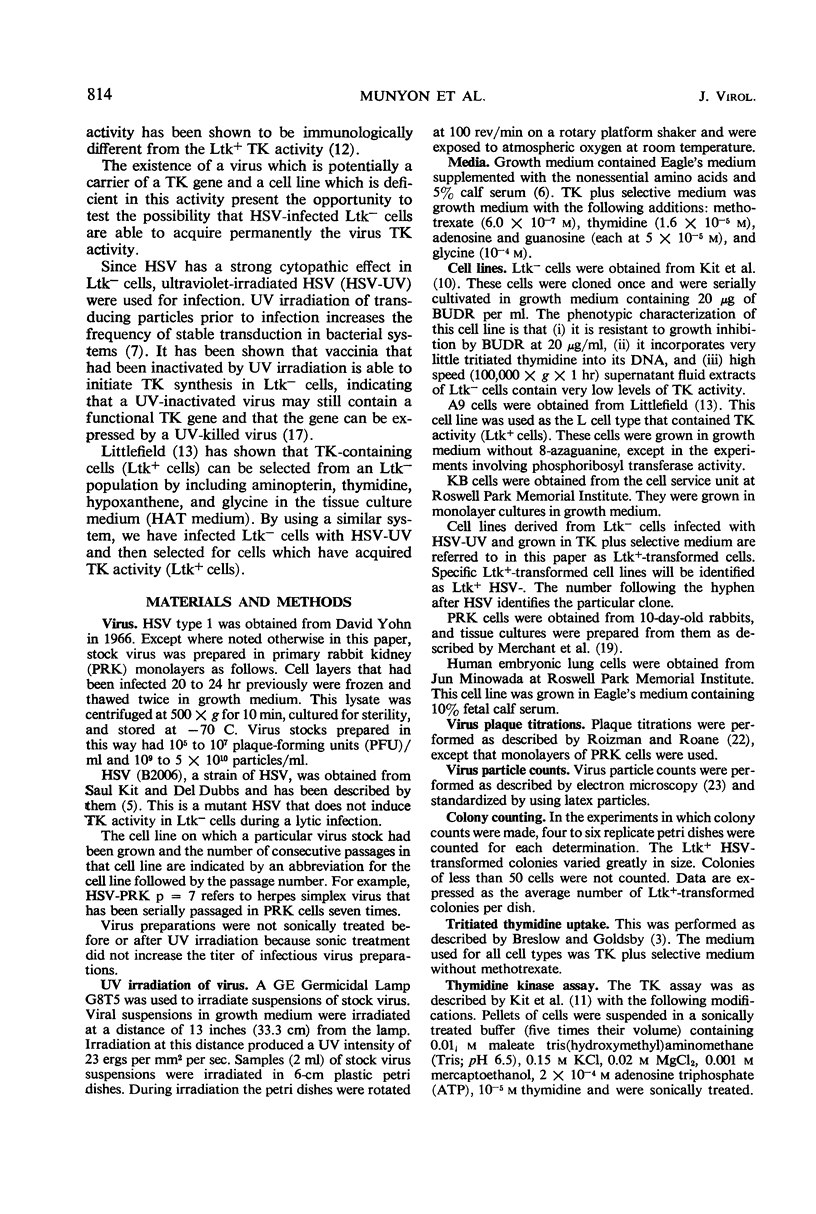
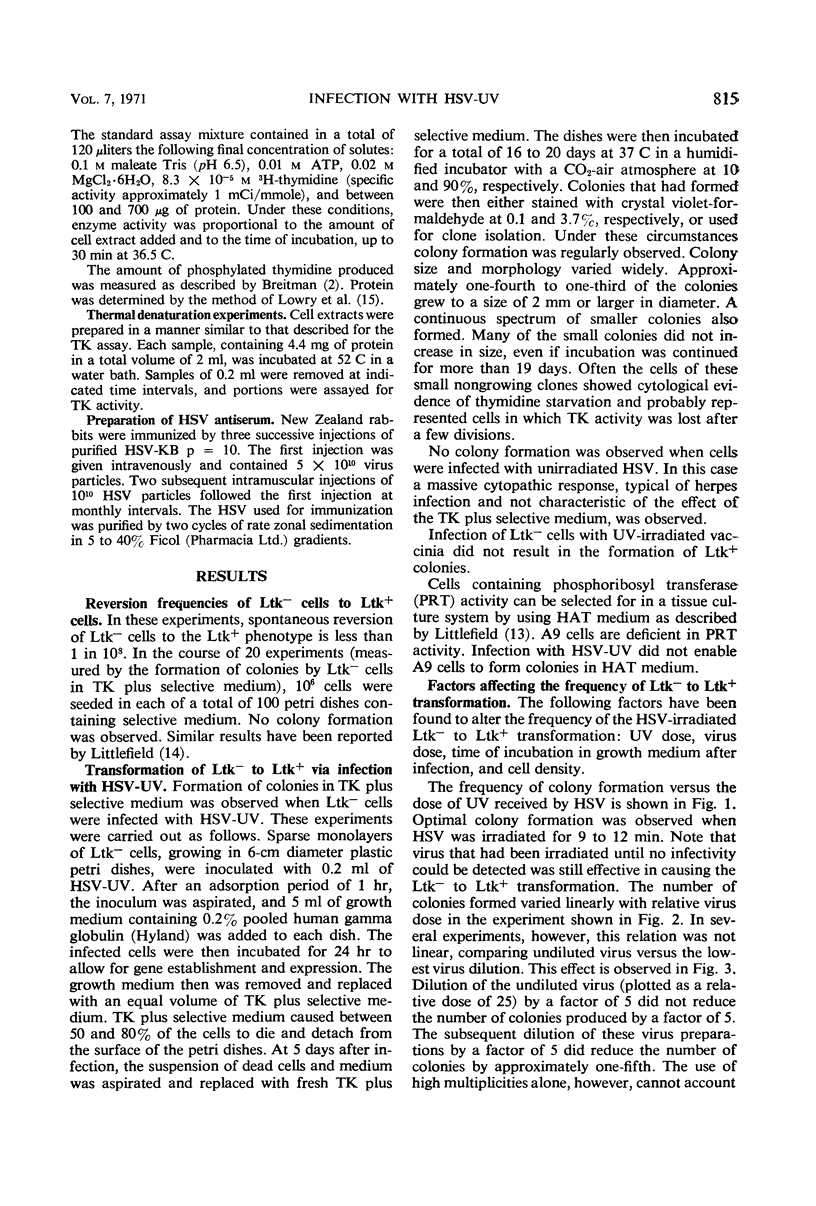
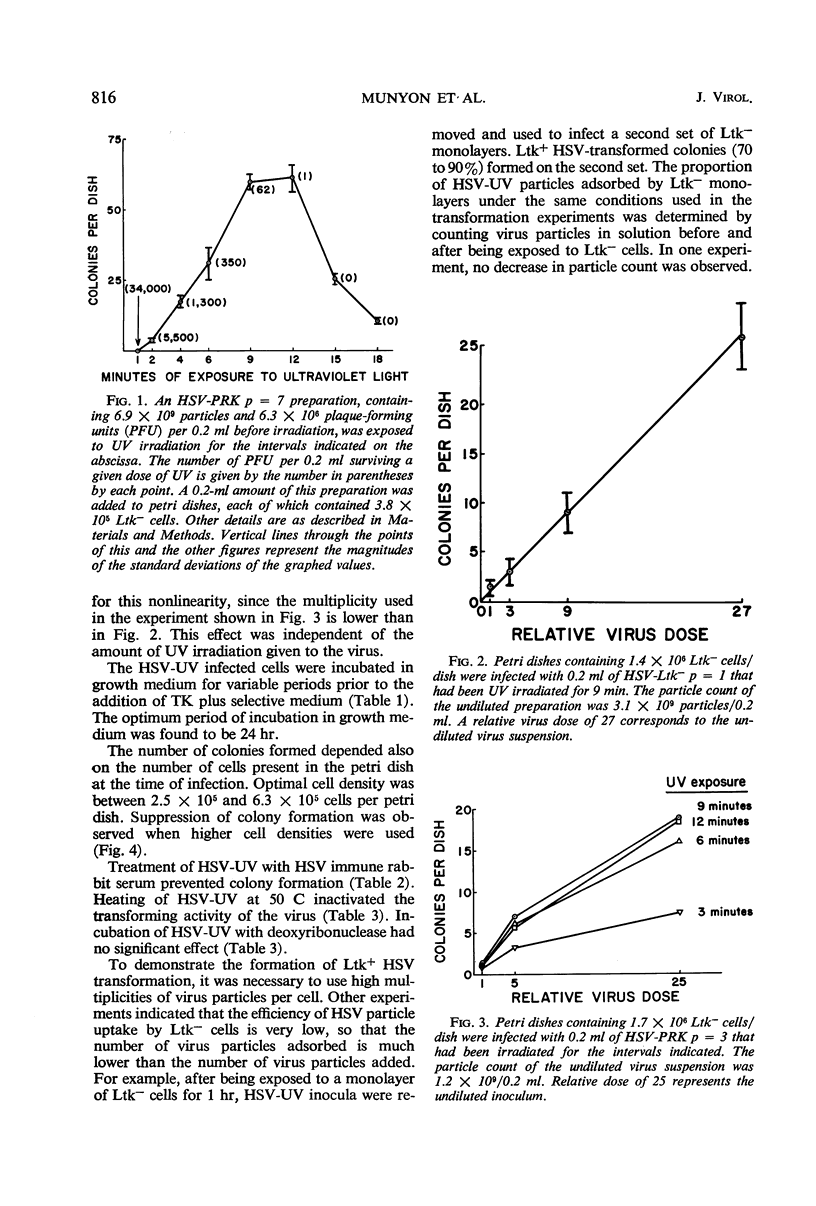
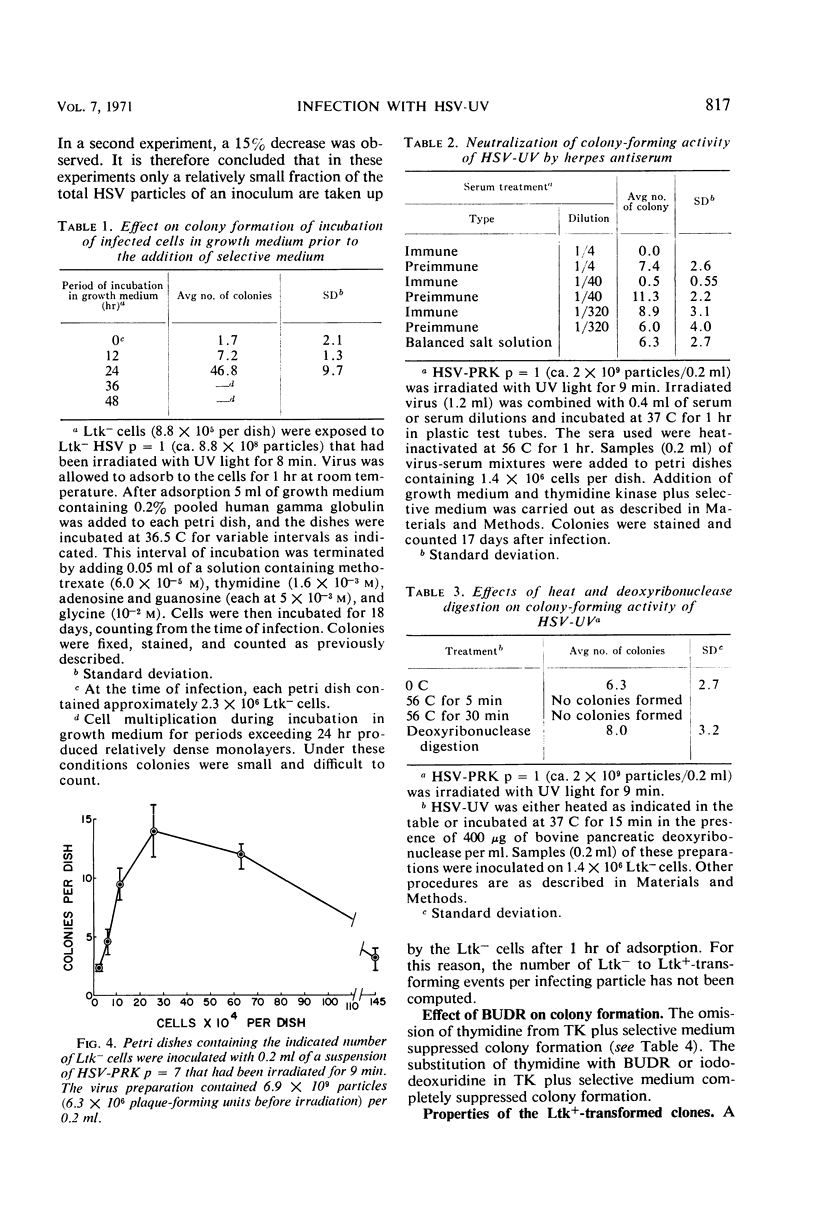
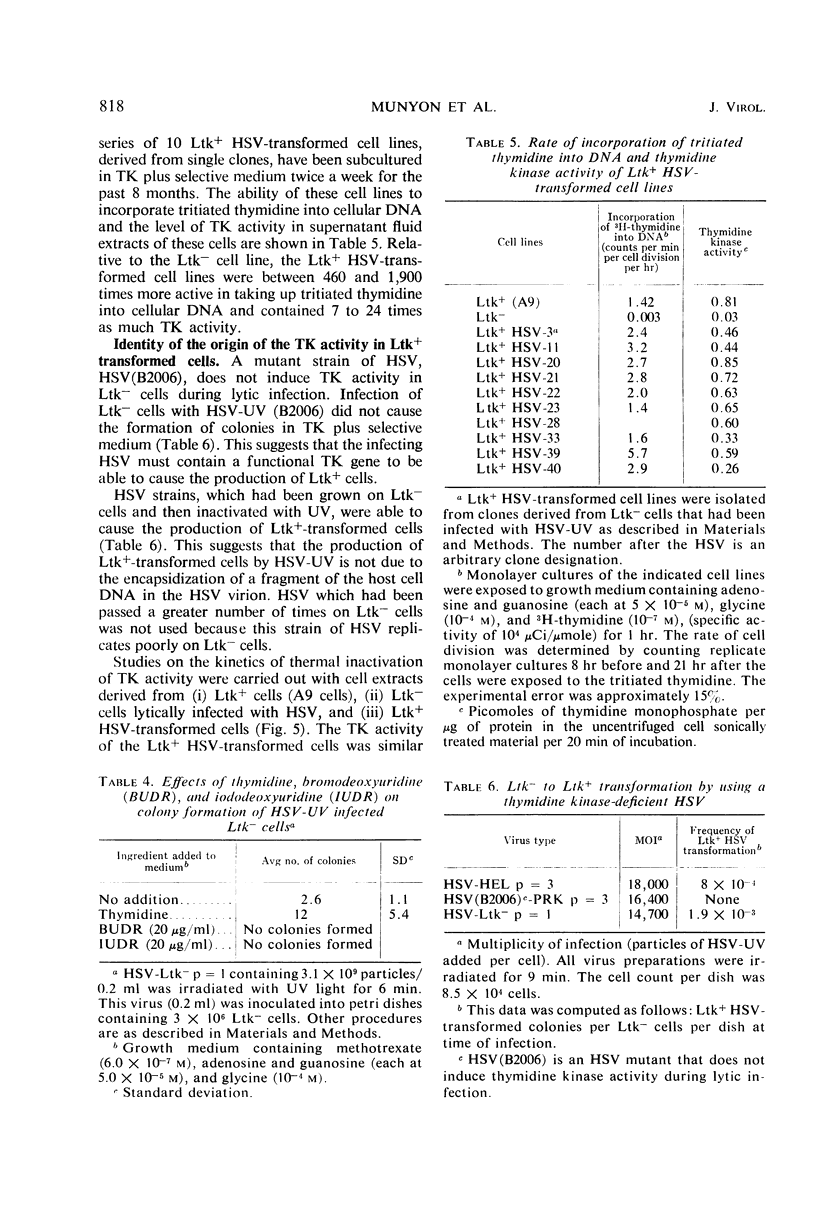
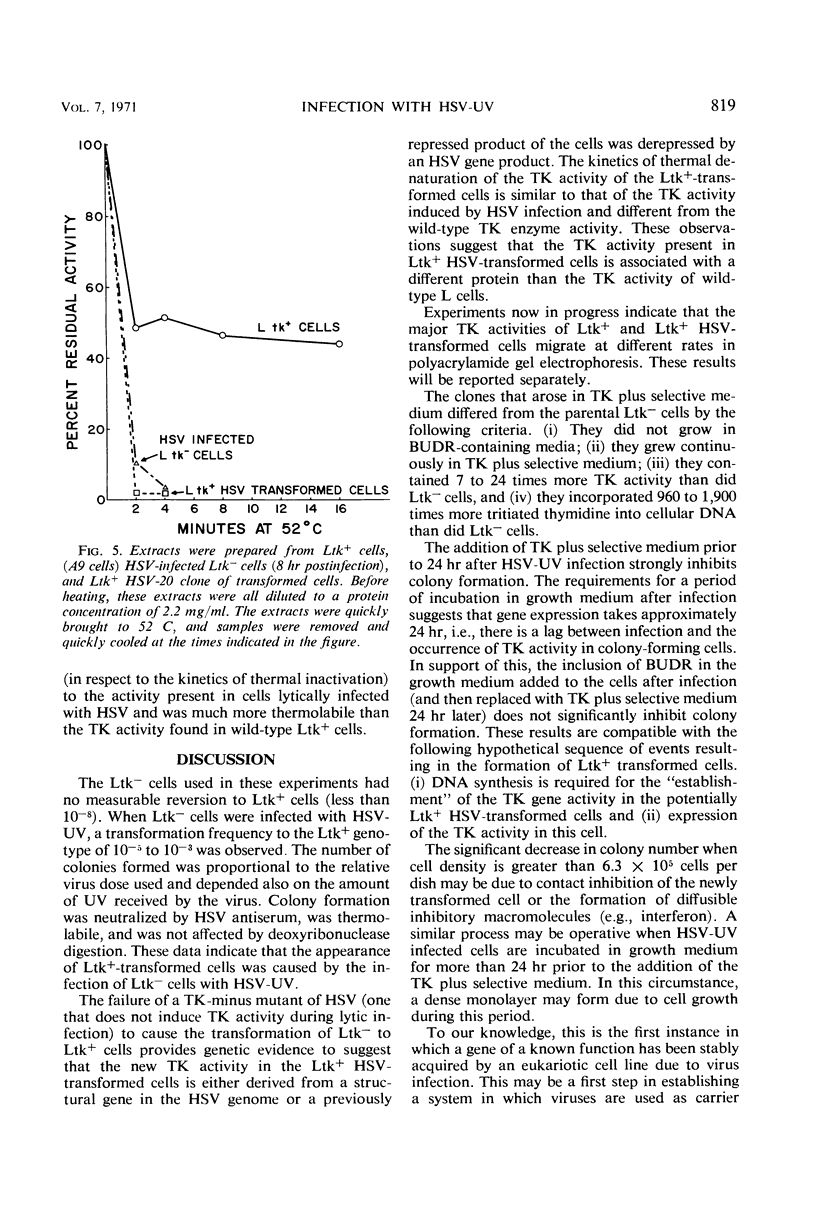
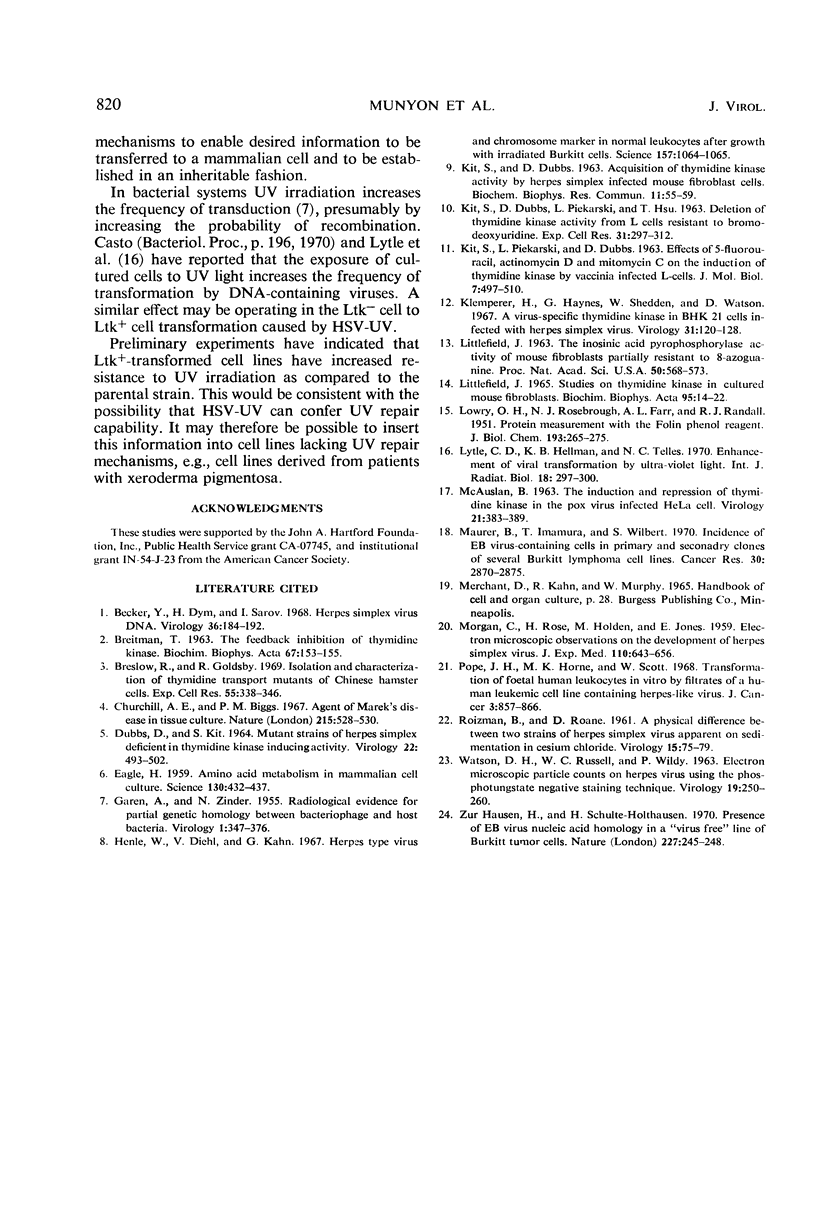
Selected References
These references are in PubMed. This may not be the complete list of references from this article.
- BREITMAN T. R. The feedback inhibition of thymidine kinase. Biochim Biophys Acta. 1963 Jan 8;67:153–155. doi: 10.1016/0006-3002(63)91807-9. [DOI] [PubMed] [Google Scholar]
- Becker Y., Dym H., Sarov I. Herpes simplex virus DNA. Virology. 1968 Oct;36(2):184–192. doi: 10.1016/0042-6822(68)90135-9. [DOI] [PubMed] [Google Scholar]
- Breslow R. E., Goldsby R. A. Isolation and characterization of thymidine transport mutants of Chinese hamster cells. Exp Cell Res. 1969 Jun;55(3):339–346. doi: 10.1016/0014-4827(69)90567-9. [DOI] [PubMed] [Google Scholar]
- Churchill A. E., Biggs P. M. Agent of Marek's disease in tissue culture. Nature. 1967 Jul 29;215(5100):528–530. doi: 10.1038/215528a0. [DOI] [PubMed] [Google Scholar]
- DUBBS D. R., KIT S. MUTANT STRAINS OF HERPES SIMPLEX DEFICIENT IN THYMIDINE KINASE-INDUCING ACTIVITY. Virology. 1964 Apr;22:493–502. doi: 10.1016/0042-6822(64)90070-4. [DOI] [PubMed] [Google Scholar]
- EAGLE H. Amino acid metabolism in mammalian cell cultures. Science. 1959 Aug 21;130(3373):432–437. doi: 10.1126/science.130.3373.432. [DOI] [PubMed] [Google Scholar]
- GAREN A., ZINDER N. D. Radiological evidence for partial genetic homology between bacteriophage and host bacteria. Virology. 1955 Nov;1(4):347–376. doi: 10.1016/0042-6822(55)90030-1. [DOI] [PubMed] [Google Scholar]
- Henle W., Diehl V., Kohn G., Zur Hausen H., Henle G. Herpes-type virus and chromosome marker in normal leukocytes after growth with irradiated Burkitt cells. Science. 1967 Sep 1;157(3792):1064–1065. doi: 10.1126/science.157.3792.1064. [DOI] [PubMed] [Google Scholar]
- KIT S., DUBBS D. R. Acquisition of thymidine kinase activity by herpes simplex-infected mouse fibroblast cells. Biochem Biophys Res Commun. 1963 Apr 2;11:55–59. doi: 10.1016/0006-291x(63)90027-5. [DOI] [PubMed] [Google Scholar]
- KIT S., DUBBS D. R., PIEKARSKI L. J., HSU T. C. DELETION OF THYMIDINE KINASE ACTIVITY FROM L CELLS RESISTANT TO BROMODEOXYURIDINE. Exp Cell Res. 1963 Aug;31:297–312. doi: 10.1016/0014-4827(63)90007-7. [DOI] [PubMed] [Google Scholar]
- KIT S., PIEKARSKI L. J., DUBBS D. R. EFFECTS OF 5-FLUOROURACIL, ACTINOMYCIN D AND MITOMYCIN C ON THE INDUCTION OF THYMIDINE KINASE BY VACCINIA-INFECTED L-CELLS. J Mol Biol. 1963 Nov;7:497–510. doi: 10.1016/s0022-2836(63)80097-2. [DOI] [PubMed] [Google Scholar]
- Klemperer H. G., Haynes G. R., Shedden W. I., Watson D. H. A virus-specific thymidine kinase in BHK-21 cells infected with herpes simplex virus. Virology. 1967 Jan;31(1):120–128. doi: 10.1016/0042-6822(67)90015-3. [DOI] [PubMed] [Google Scholar]
- LITTLEFIELD J. W. STUDIES ON THYMIDINE KINASE IN CULTURED MOUSE FIBROBLASTS. Biochim Biophys Acta. 1965 Jan 11;95:14–22. doi: 10.1016/0005-2787(65)90206-6. [DOI] [PubMed] [Google Scholar]
- LITTLEFIELD J. W. THE INOSINIC ACID PYROPHOSPHORYLASE ACTIVITY OF MOUSE FIBROBLASTS PARTIALLY RESISTANT TO 8-AZAGUANINE. Proc Natl Acad Sci U S A. 1963 Sep;50:568–573. doi: 10.1073/pnas.50.3.568. [DOI] [PMC free article] [PubMed] [Google Scholar]
- LOWRY O. H., ROSEBROUGH N. J., FARR A. L., RANDALL R. J. Protein measurement with the Folin phenol reagent. J Biol Chem. 1951 Nov;193(1):265–275. [PubMed] [Google Scholar]
- Lytle C. D., Hellman K. B., Telles N. C. Enhancement of viral transformation by ultra-violet light. Int J Radiat Biol Relat Stud Phys Chem Med. 1970;18(3):297–300. doi: 10.1080/09553007014551141. [DOI] [PubMed] [Google Scholar]
- MCAUSLAN B. R. THE INDUCTION AND REPRESSION OF THYMIDINE KINASE IN THE POXVIRUS-INFECTED HELA CELL. Virology. 1963 Nov;21:383–389. doi: 10.1016/0042-6822(63)90199-5. [DOI] [PubMed] [Google Scholar]
- MORGAN C., ROSE H. M., HOLDEN M., JONES E. P. Electron microscopic observations on the development of herpes simplex virus. J Exp Med. 1959 Oct 1;110:643–656. doi: 10.1084/jem.110.4.643. [DOI] [PMC free article] [PubMed] [Google Scholar]
- Maurer B. A., Wilbert S. M., Imamura T. Incidence of EB virus-containing cells in primary and secondary clones of several Burkitt lymphoma cell lines. Cancer Res. 1970 Dec;30(12):2870–2875. [PubMed] [Google Scholar]
- Pope J. H., Horne M. K., Scott W. Transformation of foetal human keukocytes in vitro by filtrates of a human leukaemic cell line containing herpes-like virus. Int J Cancer. 1968 Nov 15;3(6):857–866. doi: 10.1002/ijc.2910030619. [DOI] [PubMed] [Google Scholar]
- ROIZMAN B., ROANE P. R., Jr A physical difference between two strains of herpes simplex virus apparent on sedimentation in cesium chloride. Virology. 1961 Sep;15:75–79. doi: 10.1016/0042-6822(61)90079-4. [DOI] [PubMed] [Google Scholar]
- WATSON D. H., RUSSELL W. C., WILDY P. Electron microscopic particle counts on herpes virus using the phosphotungstate negative staining technique. Virology. 1963 Mar;19:250–260. doi: 10.1016/0042-6822(63)90062-x. [DOI] [PubMed] [Google Scholar]
- Zur Hausen H., Schulte-Holthausen H. Presence of EB virus nucleic acid homology in a "virus-free" line of Burkitt tumour cells. Nature. 1970 Jul 18;227(5255):245–248. doi: 10.1038/227245a0. [DOI] [PubMed] [Google Scholar]


